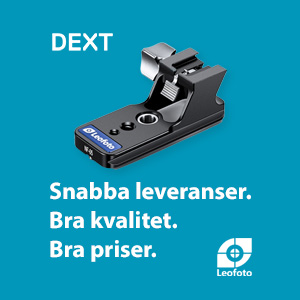På nätet och i forumen dyker det alltid upp en massa myter om digitalkameror som t.ex. att tätpixligare kameror kräver mer av objektiv eller att dom är skakkänsligare, mer diffraktionshämmade, af-besvärligare mm.
Det är ju precis tvärt om. En tätpixligare kamera ger ju alltid mer istället. Mer skärpa ur varenda objektiv, mer skärpa när diffraktionen träder in ända ner till "knappnålssmå" bländare och dessutom är de inte ett dugg skakkänsligare eller af-besvärligare.
Är det inte dags att sluta med pixeltittandet i 100% oavsett pixelmängd som kamerorna levererar och att sluta jämföra kameror med olika sensorstorlekar som om man jämför äpplen och päron?...
Tex Clark, Dpreview och tänka sig tom Canon själva sprider "myterna":
http://www.clarkvision.com/imagedetail/does.pixel.size.matter/#Conclusions
"Current good quality sensors in digital cameras are photon noise limited. This means there is no possible improvement in performance for the high signal region (bright things in an image) except to increase quantum efficiency of the devices and/or the fractional active area for which the sensor converts photons to electrons (called the fill factor). As both of these properties are reasonably high already, there is limited room for improvement. And even if these properties were improved, there would still be a big difference between large and small pixels. Larger pixels have higher signal-to-noise ratio at all levels, but especially at low signal levels. The obvious improvement still possible would be to reduce the read noise, but that would likely improve large sensors also, thus large sensors with large pixels will always have an advantage. Whether the difference in noise is great enough for you to choose a larger sensor, and thus likely a larger and heavier camera, is a decision you must make for yourself.
When choosing between cameras with the same sized sensor but differing pixel counts, the one with larger pixels (and fewer total pixels) will have better high ISO and low light performance, while the one with more pixels can deliver images with finer detail in good light. You will need to decide where that trade point is. My models show the optimum in DSLR-sized sensors have pixels around 5 microns. You will need to determine what your prime imaging will be. For low light work, I might bias the pixels to a little larger than 5 microns; if low light/high ISO work is not as important, I might bias my choice to slightly smaller than 5 microns. For P&S cameras with small sensors, I prefer cameras with pixels larger than 2 microns.
Because good digital cameras are photon noise limited, the larger pixels will always have higher signal-to-noise ratios unless someone finds a way around the laws of physics, which is highly unlikely.
Image detail can be blurred by diffraction. Diffraction is more of an issue with smaller pixels, so again cameras with larger pixels will perform better, giving sharper images with higher contrast in the fine details."
http://www.clarkvision.com/imagedetail/does.pixel.size.matter2/
"In the extremes of current digital cameras with small cameras having pixel sizes near 2-microns, and large pixel cameras (currently found in DSLRs), there is a factor of about 12 to 16 in photons collected. That means the large pixel camera performs at ISO 1200 to 1600 with similar noise and dynamic range performance of a small pixel camera operating at ISO 100. If you are a DSLR owner, do you take all your pictures at ISO 1600? If you are a small pixel point and shoot cammera user, do you use ISO 400 often? If so, that is like using ISO 6400 on a large pixel DSLR in terms of noise and dynamic range performance! (Such effective ISO's can be achieved with DSLRs by setting the ISO to 3200 and the meter compensation to -1 stop.) It is this fundamental difference of pixel size as to why large pixel DSLRs have such great noise performance, which leads to low light and fast action performance"
http://www.dpreview.com/learn/?/key=pixel_density
"Because the light collecting area and efficiency of each photosite will vary between technologies and manufacturers, pixel density should not be used as a predictor for image quality but instead as a parameter to help understand the sensor"
http://cpn.canon-europe.com/content/education/infobank/capturing_the_image/pixels_and_image_size.do
"Even after making these changes, images from more recent EOS professional digital cameras can still look softer than those from earlier models. This is because recent models have more pixels, which means that pixel size is smaller (11.5µm on the EOS-1D; 7.2µm on the EOS-1Ds Mark II). Smaller pixels are more sensitive to camera shake, as a smaller movement will cause the image to move across more pixels. You need to hold the camera steadier - ideally on a tripod."
"For the same reason, sports photographers also need to re-think their shutter speeds, as blur from subject movement will be more apparent on cameras with more pixels. Where possible, consider increasing the shutter speed, even if this requires an increase in ISO speed."
Var är dina källor för dina påståenden?







